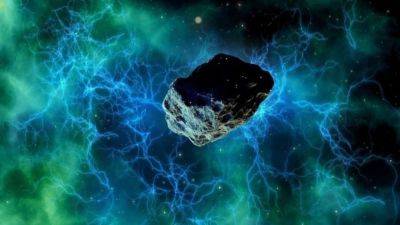Do you know how many asteroids NASA scientists have tracked to date? Approximately 1,298,148 asteroids have been identified by NASA. The space agency employs a range of advanced ground and space-based telescopes for tracking and researching these cosmic rocks, primarily concentrated within the asteroid belt situated between the orbits of Mars and Jupiter. Telescopes and observatories such as NEOWISE, the Atacama Large Millimeter/submillimeter Array (ALMA), Pan-STARRS1, and the Catalina Sky Survey play pivotal roles in the study of asteroids and the mitigation of uncertainties surrounding their close encounters with Earth.
Aircraft-sized asteroid racing towards Earth! NASA reveals close approach details
02.10.2023 - 06:22 / tech.hindustantimes.com / Karl Reinmuth
NASA has been working on its Psyche mission for the last few years but hasn't been able to launch it yet. The space mission to the 16 Psyche asteroid has been delayed several times now, with the most recent happening on October 5. The $1.2 billion mission was set to launch via a SpaceX Falcon 9 rocket as part of NASA's Discovery missions but was delayed, giving NASA more time to reverify parameters that control the rocket's nitrogen cold gas thrusters. For the unaware, the 16 Psyche asteroid is made up of gold, nickel, and iron deposits and is supposedly worth more than Earth's economy.
In a separate development, NASA has shed light on an asteroid that will pass at extremely close distance soon.
According to details revealed by NASA's Center for Near-Earth Object Studies (CNEOS), this asteroid, designated as Asteroid 2023 SN6 is expected to make its closest approach to Earth on October 4. Its orbit will bring it as close as 4.8 million kilometers near Earth. While this distance might seem like a lot, it is quite less in astronomical terms. It has been estimated to be travelling at a breakneck speed of 30564 kilometers per hour.
According to NASA, the asteroid that is approaching Earth isn't big enough to be classified as a Potentially Hazardous Object. Asteroid 2023 SN6 is estimated to be almost 86 feet wide, which is not big enough to be classified as a Potentially Hazardous Object. In terms of size, it is nearly as big as an aircraft.
It belongs to the Apollo group of Near-Earth Asteroids, which are Earth-crossing space rocks with semi-major axes larger than Earth's. These asteroids are named after the humongous 1862 Apollo asteroid, discovered by German astronomer Karl Reinmuth in the 1930s.
According to NASA, the Psyche spacecraft will orbit the 16 Psyche asteroid for 21 months to map the asteroid and gain information about the makeup of the asteroid as well as learn how metal core asteroids and planets are formed. This will be an important step to study the formation of Earth itself as well.
The objectives of the mission include determining the age of regions on the asteroid, studying its formation, characterizing its topography, and studying dips in the asteroid's gravity using multiple scientific instruments such as multispectral imager, magnetometer, gamma ray and neutron meter, and more.
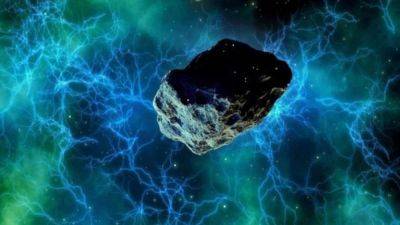
Apollo asteroid to pass Earth today, reveals NASA
For years, it has been known that the most likely cause of the extinction of dinosaurs was an asteroid impact. The most common theory behind the extinction is the Alvarez hypothesis, which claims that an asteroid struck Earth nearly 65 million years ago and wiped out entire species of dinosaurs. This theory is backed by some proof too as scientists have also discovered its impact crater, known as the Chicxulub crater, buried under the Yucatan Peninsula in Mexico. As per the hypothesis, the impact of the asteroid would have caused the formation of huge tidal waves and an impact crater almost 140 km wide. Lland material would have splattered into space, changing the Earth into a nuclear winter-like environment, ultimately leading to the demise of dinosaurs.
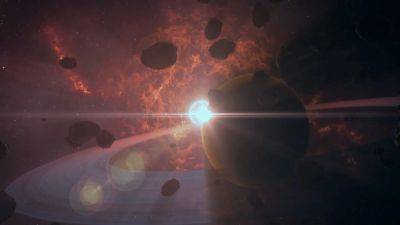
Apollo group asteroid to come closer than the Moon; Know details of approach
NASA has recently issued details about an asteroid designated as Asteroid 2023 TK15 that is expected to make its closest approach to Earth on October 20. This asteroid has been discovered and tracked using various advanced technological instruments such as the NEOWISE telescope, Atacama Large Millimeter/submillimeter Array (ALMA), Pans-STARRS1 and Catalina Sky Survey. Know all about it.
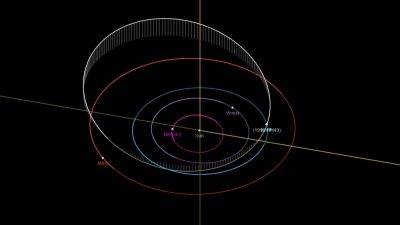
Potentially Hazardous Asteroid to pass Earth today! Know details
You may think asteroids are simply floating rocks in space and while it may seem so due to their appearance, it isn't quite the case. These space rocks can be classified into 3 types based on their structural composition. The most commonly found asteroids are S-type, which are made up of carbon-rich substances. On the other hand, S-type asteroids are made up mainly of silicate minerals and are less common. M-type asteroids are the least prevalent and they are primarily composed of metal. NASA recently sent out a mission to a metal-rich asteroid called 16 Psyche which is supposedly worth more than the whole planet's economy put together, at a staggering $10 quintillion!

600-foot asteroid to do a close flyby of Earth; NASA reveals size, speed, and more
Hazards like solar storms and asteroids constantly appear and pose threats to our planet. NASA diligently monitors Near-Earth Asteroids (NEAs) to safeguard our planet from potential impacts. When NASA's telescopes detect a new NEA, precise observations of its position in the sky are reported to the Minor Planet Center. Subsequently, the Center for Near-Earth Object Studies (CNEOS) utilizes this data to establish the most likely orbit of the asteroid around the Sun. To evaluate the risk of impact and the asteroid's orbit, NASA employs the innovative Sentry II system, featuring a unique algorithm. Sentry II strategically selects random points within the entire uncertainty region, enabling the program to pinpoint very low-probability impact scenarios. Recently, NASA has issued an alert concerning a colossal asteroid that is approaching Earth tomorrow:

Asteroid 2023 TT8 to get very close to Earth today, NASA reveals
Asteroids are abundant in space and as many as 1298148 have been discovered to date. To track and study these space rocks which are mainly present in the asteroid belt between the orbits of Mars and Jupiter, NASA has several advanced ground and space-based telescopes in place. NEOWISE telescope, Atacama Large Millimeter/submillimeter Array (ALMA), Pans-STARRS1 and Catalina Sky Survey are just some of the telescopes and observatories that help study asteroids and remove any uncertainties around their potentially close approaches to Earth.
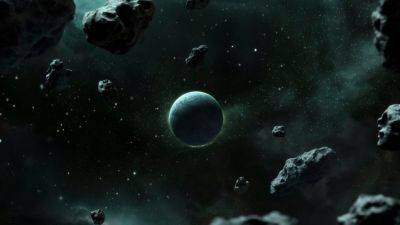
House-sized asteroid hurtling towards Earth for close approach, NASA reveals
With its advanced tech such as the NEOWISE telescope, Atacama Large Millimeter/submillimeter Array (ALMA), Pans-STARRS1 and Catalina Sky Survey, NASA has revealed details about an asteroid that will come close to Earth. An asteroid, given the designation of Asteroid 2023 TC1, is on its way towards Earth and could make its closest approach to the planet today, October 13.
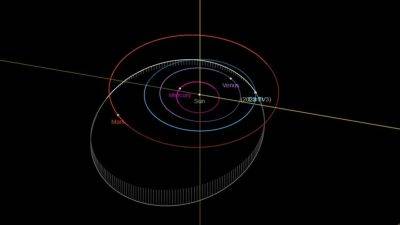
Wow! Asteroid 2023 TV3 to pass Earth 4 times closer than the Moon! Know details
NASA, ESA and other space agencies have a suite of ground and space-based telescopes and observatories to track and monitor asteroids. Despite the presence of these technological marvels, an asteroid snuck past all of them! The asteroid, named Asteroid 2023 NT1, made its closest approach to Earth on July 13 when it entered Earth's 60,000-mile radius, which is 4 times closer than the Moon! It was not a small rock either, as scientists later revealed it was nearly 200 feet wide, about 4 times the size of the Chelyabinsk asteroid that caused massive damage in Russia. It was at last found by the Asteroid Terrestrials-Impacts Last Alert System (ATLAS) observatory in South Africa on July 15.
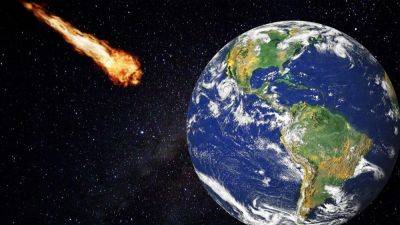
Asteroid hurtling towards Earth today at a mind-numbing 31394 kmph, reveals NASA
On September 8, 2016, NASA launched a historic mission - the Origins, Spectral Interpretation, Resource Identification, and Security-Regolith Explorer (OSIRIS-REx). It was launched to study a Potentially Hazardous Asteroid (PHA) called Bennu, which has a 1/2700 chance of impacting Earth between 2175 and 2195. After a 6-year journey that involved landing on the asteroid and collecting samples from its surface, the spacecraft finally returned the samples last month, after which they underwent a “nitrogen purge”. Today, NASA will finally open up the canister returned by the OSIRIS-REx spacecraft and show off the asteroid sample to the world in an event that will be live-streamed. You can watch it online here.
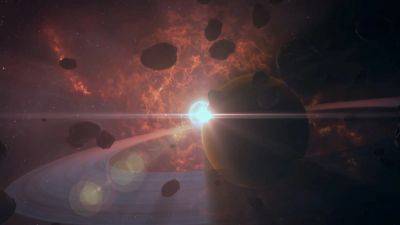
Asteroid to come closer than the Moon! NASA reveals details of close approach
To discover, monitor and study asteroids in space, NASA has several space telescopes and ground-based observatories in place. These include the famous Hubble Space Telescope and the new James Webb Space Telescope. Moreover, spacecraft such as Dawn, OSIRIS-REx, and Hayabusa2 have also helped in studying these ancient space rocks. As of now, there are 1,298,210 known asteroids in space and while not all of them are dangerous, some of them can get knocked off their orbit due to interaction with a planet's gravitational field such as Jupiter, and head towards Earth for potential impact. Therefore, to remove the uncertainties around the asteroid's approach, it is imperative that we track them.
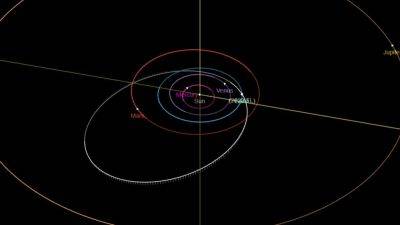
140-foot asteroid set for a close call with Earth, reveals NASA
Did you know that artificial intelligence (AI) is aiding in the discovery and study of asteroids? After aiding various industries across sectors such as education, healthcare, engineering and more, AI could also potentially help protect Earth against asteroids. According to a study published by the University of Washington, an algorithm, named HelioLinc3D, helped researchers discover a potentially hazardous asteroid. Asteroid 2022 SF289, which is almost 600 feet wide, was discovered during the algorithm's test in Hawaii and has not been deemed as dangerous in the foreseeable future.
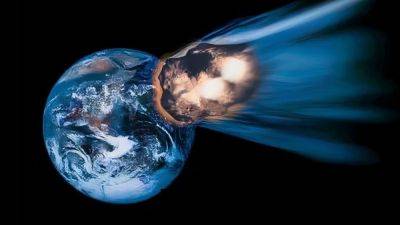
NASA reveals bus-sized asteroid rushing towards Earth today! Check speed, size, other details
NASA has several space and ground-based telescopes in place to discover, track, and study asteroids. But if you're a budding astronomer, you can help the space agency too! NASA's new Daily Minor Planet Project allows astronomers and skywatchers to help discover new asteroids and track them in data sets. To capture asteroids, the Daily Minor Project uses the NASA-funded, University of Arizona-based Catalina Sky Survey which captures nearly 1000 images every night. Due to this volume, NASA scientists fall short of personnel to study these images. After looking at the image, you just have to click on a yes or a no button and add a comment if necessary, before moving on to the next image.
